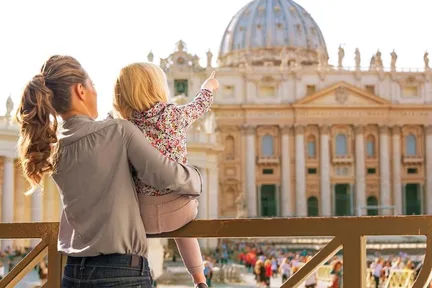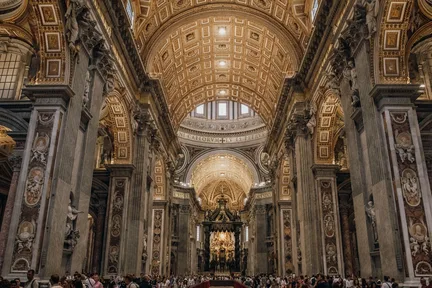Piazza Navona
The best of Piazza Navona
Bucket-list experiences
Make it a getaway
More to explore
Why people love Piazza Navona
Nearby places to go
FAQs about Piazza Navona
When is the best time to visit Piazza Navona?
How to go to Piazza Navona?
What is Piazza Navona famous for?
Is Piazza Navona worth seeing?
Do I need tickets for Piazza Navona?
How long should I spend in Piazza Navona?
What are the hotels near Piazza Navona?
What to know before visiting Piazza Navona
Things to Do in Piazza Navona
Fontana dei Quattro Fiumi (Fountain of the Four Rivers)
The Fountain of the Four Rivers, also called Fontana dei Quattro Fiumi, shows the world in a round pool with statues representing four big rivers: the Nile from Africa, the Danube from Europe, the Ganges from Asia, and the Rio de la Plata from the Americas. Each statue has plants from its continent, like prickly pears for the Americas and a date palm for Africa.
Around the sculpture, you'll find seven animals: a dolphin, crocodile, lion, horse, serpent, dragon, and sea monster. It's a cool fountain with lots of interesting details!
Fontana del Moro (Fountain of the Moor)
The Fountain of the Moor, originally known as the "Seashell Fountain," was created by Giacomo della Porta and later improved by Bernini, who included the figure of the Moor. You can find this fountain on the southern side of the square, adding a touch of artistry and history to the charming surroundings of Piazza Navona.
Fontana del Nettuno (Fountain of Neptune)
In Florence's Piazza della Signoria, there's another Piazza Navona Fountain called the Fountain of Neptune. It shows Neptune, the sea god, on a chariot pulled by horses. The statue is made of bright white marble and was created by Antonio della Bitta between 1563 and 1565 to celebrate a new water system in the city. Surrounding Neptune are other sea creatures like Tritons and spirits.
Stadio di Domiziano (The Stadium of Domitian)
Explore the remains of the Stadium of Domitian in the Piazza Navona Underground, designated as a UNESCO World Heritage Site. Located approximately 4.50 meters below street level in Piazza Navona, discover the ancient ruins of the first and only masonry athletics stadium in Roman history.
Learn more about the Roman Empire and the fascinating history of ancient sports as you journey into this ancient stadium.
Museo di Roma (Museum of Rome)
The Palazzo Braschi, found in the square, is now home to the Museum of Rome. Inside, you can explore Rome's history through paintings, engravings, and ancient artworks from Tuesday to Sunday, 10:00 to 19:00.
This museum is a significant place to learn about Rome's social and artistic past from the Middle Ages to the early 20th century. There are over a hundred thousand works, including paintings, sculptures, and more from Vatican museums. Some items, like furniture and clothing, are displayed in rotation, offering a look into Rome's rich heritage through the ages.
Popular attractions near Piazza Navona
Pantheon
Visit the Pantheon, known as the Roman Pantheon, a stunning building in Rome, well preserved from ancient times. You can go to its surroundings to take pictures, enjoy meals at nearby terraces, and watch street performers in Piazza della Rotonda. It's a lively place where you can take in the history and vibrant atmosphere of this famous landmark.
The Church of Saint Agnes in Agony
The Church of Saint Agnes in Agony is the main attraction in the Piazza, though some people think Bernini's fountain is even more popular. Built in the 17th century in a fancy style called baroque, this church was finished by a father-son team along with another architect named Francesco Borromini.
The front of the church is seen as a baroque Rome masterpiece because it's very special and creative. It's said to be one of the prettiest church fronts in Rome, right after Saint Peter's Basilica.
Campo de Fiori
Campo de Fiori Market is a big outdoor market in the heart of Rome, one of the largest markets in the city. It used to be in Piazza Navona but moved to Campo de' Fiori in 1869. Now, it's popular with tourists but still offers fresh goods.
The market is open from 7 a.m. to 2 p.m. every day, with some stalls staying open a little later and street artists performing around the area.



